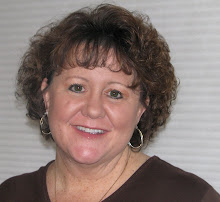
Tyler Cordle’s mom used to say if there was one thing she feared, it was something happening to her son. She always prayed to keep him safe and healthy.
So when she and her husband were told on Dec. 1 last year that their then 13- month-old boy had neuroblastoma stage 4 cancer and only had a 30 percent chance of survival, her world fell apart. But even doctors cannot predict miracles.
Today, watching 2-year-old Tyler smile and laugh while playing with his toys, one would never suspect the battle this little boy has fought during the last year.
Shortly before he was diagnosed, it was clear Tyler was experiencing pain in his legs and hips. He screamed when his parents raised his legs to change his diaper, and he could no longer pull himself up on the furniture. His parents took him to the doctor and were told it could be a virus from a recent cold that had settled in his joints.
But Tyler did not improve, so they took X-rays. What they found set this young family’s world into a tailspin. Two spots were found on his leg, and the family was sent immediately to Spokane, where Tyler underwent a complete body scan. There were six tumors in all – two on his skull, one on his lung, two on his leg, and the primary spot on his right kidney. The cancer was also in his bone marrow.
“I completely shut down,” said Tyler’s mom.
But with the support of family, friends and a community of people they did not even know, the Cordle family saw Tyler through a year of seven chemotherapy treatments, 12 rounds of radiation, more than 40 blood and platelet transfusions and a stem cell transplant using his own harvested cells. And then there were five rounds, each round lasting five days, of antibody therapy – something that was recently approved as standard protocol for treating Tyler’s type of cancer.
“That was a huge piece of the puzzle,” said Tyler’s mom. “It increased his chance (of survival) by 20 percent.”
It was after the second round of chemotherapy that the family began to see signs of their prayers being answered.
Doctors ordered scans to see if and how well Tyler had responded to the first two rounds of chemotherapy.
“The doctor said to not expect much improvement because of how aggressive the cancer was,” said Tyler’s mom.
Thankfully, they were wrong. Five of the six tumors were gone and the remaining tumor had shrunk to half the size. And the cancer was no longer found in the bone marrow.
“There’s no way to explain it other than it was a miracle,” said Tyler’s mom.
But because the cancer could still be lurking in his cells, the doctors continued with the treatment plan and in March were able to remove the main tumor – detaching it from the kidney and shaving part of the liver to which it had attached.
Although he was delayed in some areas – not walking until he was 21 months old and experiencing high-pitch hearing loss due to the treatments – today Tyler gives no indication that he is anything but a happy, healthy 2-year-old.
“It is hard to say if he is slower because of the cancer or it could just be him,” said Tyler’s mom.
Just this week, Tyler finished his last treatment, certainly a cause for celebration.
But the Cordle family could not have gotten through this year without the help of their families, the community and, for Tyler, his little stuffed puppy.
“It’s his best friend,” said his mom, explaining that through the cancer treatments her son amazed everyone with his attitude.
“In Seattle he was just able to lay in the bed with no energy, and yet he would still blow the nurses kisses and give them high fives. “He’s always happy.”
The family is grateful that Tyler will most likely not remember anything of what he has endured in the past year. And with treatment over, goals for Tyler now include gaining weight and strengthening his immune system.
Now in remission, Tyler’s chances of survival are at 65 percent. But the family is betting on 100 percent.
“We are all choosing to think he’ll be OK,” said his mom as she scooped him onto her lap.
